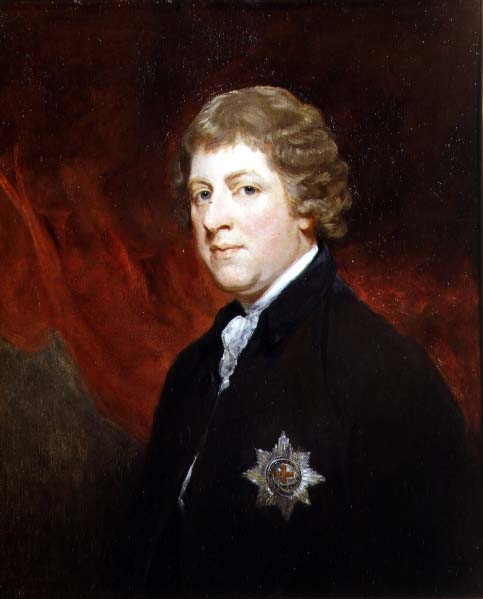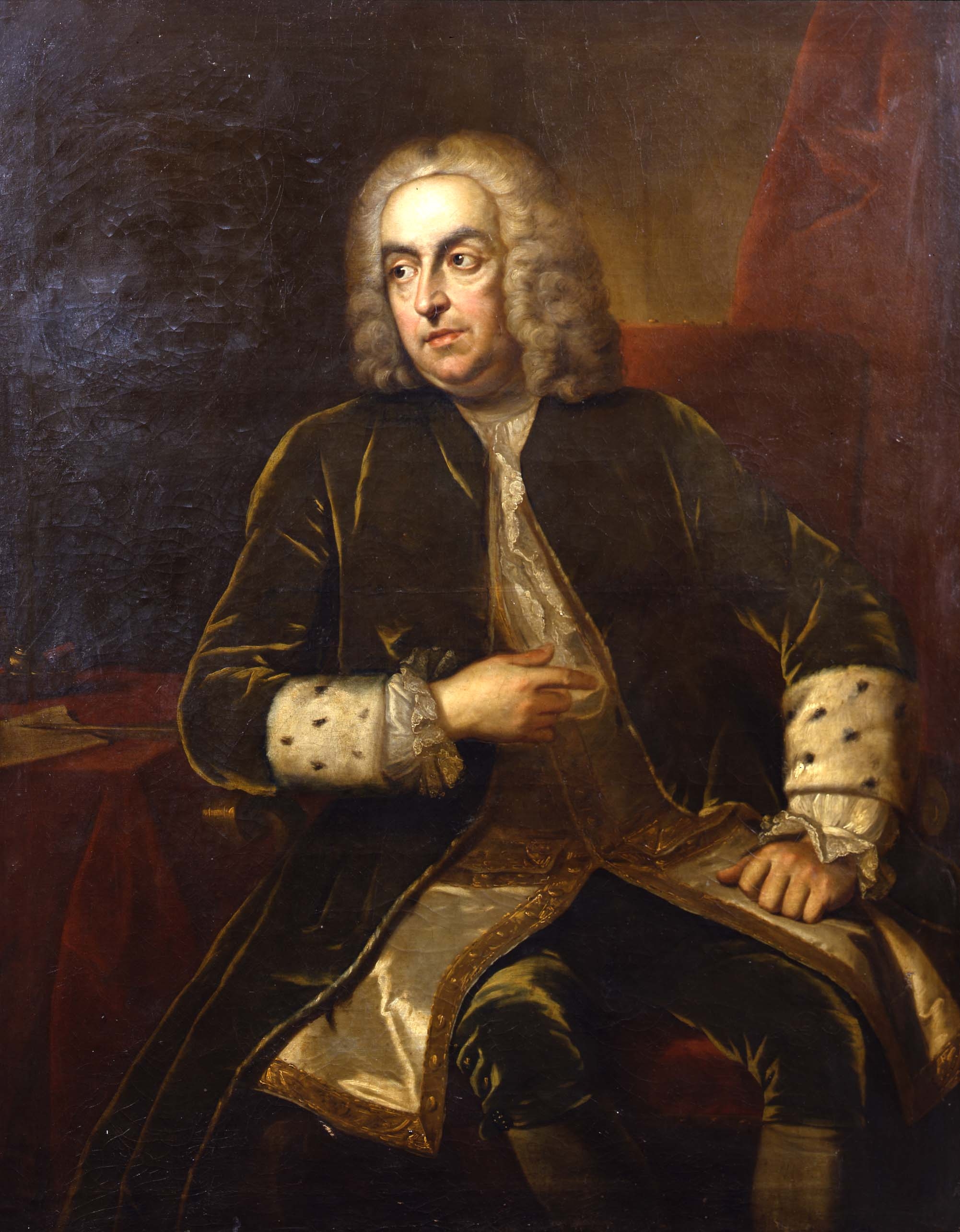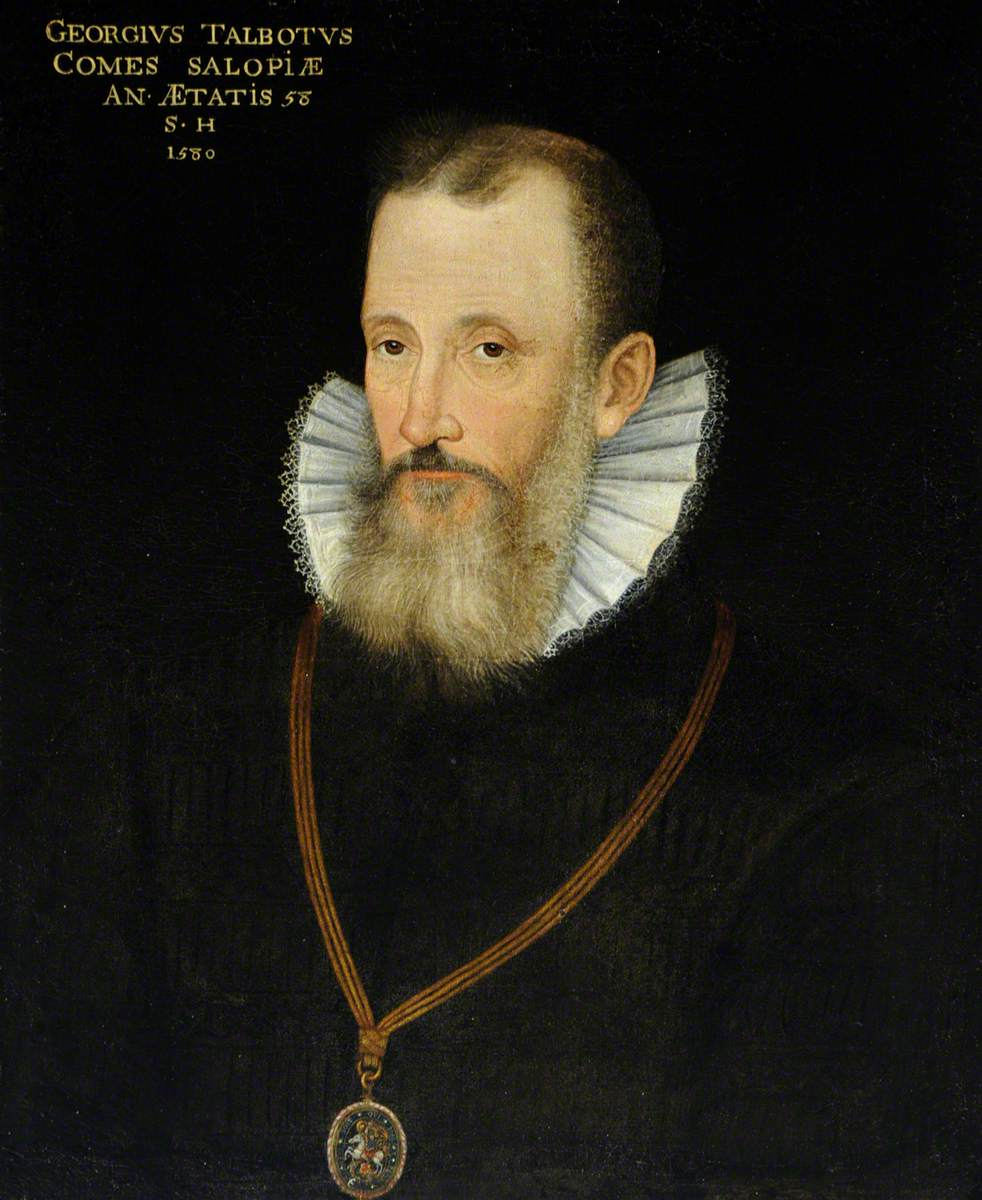|
Lilleshall Hall
Lilleshall Hall is a large former country house and estate in the fields of Lilleshall, Shropshire, England. It is run by Serco Leisure Operating Ltd on behalf of Sport England as one of three National Sports Centres, alongside Bisham Abbey and Plas y Brenin. It lies between Telford and Newport. History Early history The core of the Lilleshall estate, which amounts to , was originally the demesne of Lilleshall Abbey, an Augustinian foundation of the 12th century. The ruins of the original Lilleshall Abbey are protected today by English Heritage. The estate was granted after the Dissolution of the Monasteries to James Leveson, a Wolverhampton wool merchant, in 1539. His family, including Walter Leveson and Vice-Admiral Richard Leveson, the last of his direct line, lived in a lodge in the grounds, although they were only occasionally resident in Lilleshall, as they had many other houses. The estates passed to Richard Leveson, a distant cousin who was a prominent Royalist ... [...More Info...] [...Related Items...] OR: [Wikipedia] [Google] [Baidu] |
Lilleshall
Lilleshall is a village and civil parish in the county of Shropshire, England. It lies between the towns of Telford and Newport, on the A518, in the Telford and Wrekin borough and the Wrekin constituency. There is one school in the centre of the village. The village dates back to Anglo-Saxon times, the parish church being founded by St Chad. It is mentioned in the Domesday Book. The Norman parish church of St Michael and All Angels is a grade I listed building. Local governance A civil parish was formed on 1 April 2015 from Lilleshall, Donnington and Muxton, though a previous parish also called "Lilleshall" existed. Layout There is a monument, a cricket club, a tennis club, a church and a primary school clustered around a bracken-covered hill named Lilleshall Hill. Lilleshall Abbey Lilleshall Abbey, some distance to the east of the village, was an Augustinian house, founded in the twelfth century, the ruins of which are protected by English Heritage. After the dissoluti ... [...More Info...] [...Related Items...] OR: [Wikipedia] [Google] [Baidu] |
English Heritage
English Heritage (officially the English Heritage Trust) is a charity that manages over 400 historic monuments, buildings and places. These include prehistoric sites, medieval castles, Roman forts and country houses. The charity states that it uses these properties to "bring the story of England to life for over 10 million people each year". Within its portfolio are Stonehenge, Dover Castle, Tintagel Castle and the best preserved parts of Hadrian's Wall. English Heritage also manages the London Blue Plaque scheme, which links influential historical figures to particular buildings. When originally formed in 1983, English Heritage was the operating name of an executive non-departmental public body of the British Government, officially titled the Historic Buildings and Monuments Commission for England, that ran the national system of heritage protection and managed a range of historic properties. It was created to combine the roles of existing bodies that had emerged from a long ... [...More Info...] [...Related Items...] OR: [Wikipedia] [Google] [Baidu] |
Granville Leveson-Gower, 1st Marquess Of Stafford
Granville Leveson-Gower, 1st Marquess of Stafford, KG PC (4 August 172126 October 1803), known as Viscount Trentham from 1746 to 1754 and as The Earl Gower from 1754 to 1786, was a British politician from the Leveson-Gower family. Background Stafford was a son of John Leveson-Gower, 1st Earl Gower (1694–1754) and his wife Lady Evelyn Pierrepont. His maternal grandparents were Evelyn Pierrepont, 1st Duke of Kingston-upon-Hull and his first wife Lady Mary Feilding. Mary was a daughter of William Feilding, 3rd Earl of Denbigh and his wife Mary King. His father was a prominent Tory politician who became the first major Tory to enter government since the succession of George I of Great Britain, joining the administration of John Carteret, 2nd Earl Granville in 1742. Gower was educated at Westminster School and Christ Church, Oxford. Political and industrial investment career Stafford was elected to parliament in 1744. With the death of his elder brother in 1746, he became kn ... [...More Info...] [...Related Items...] OR: [Wikipedia] [Google] [Baidu] |
John Leveson-Gower, 1st Earl Gower
John Leveson-Gower, 1st Earl Gower, PC (10 August 1694 – 25 December 1754), was an English Tory politician and peer who twice served as Lord Privy Seal from 1742 to 1743 and 1744 to 1754. Leveson-Gower is best known for his political career in the British Parliament, where he sat in the House of Lords as a leading member of the Tory Party before defecting to serve in various Whig-dominated government ministries until his death. Born in London, England into a prominent aristocratic family, Leveson-Gower was educated at Westminster School and the University of Oxford. After his father died in 1709, Leveson-Gower assumed his peerage as the Baron Gower and took his seat in the House of Lords. As part of his political career, he embarked on an effort to bring several parliamentary constituencies in Staffordshire and Westminster under his control during the 1720's. In 1742, Leveson-Gower started serving in the Carteret ministry as Lord Privy Seal. Though he resigned the next y ... [...More Info...] [...Related Items...] OR: [Wikipedia] [Google] [Baidu] |
John Leveson-Gower, 1st Baron Gower
John Leveson-Gower, 1st Baron Gower PC (7 January 1675 – 31 August 1709) was a member of the Leveson-Gower family. He was the son of Sir William Leveson-Gower, 4th Baronet and his wife Jane Granville.Record for ''John Leveson-Gower, 1st Baron Gower'' at ''www.cracroftspeerage.co.uk'' He was born in Sittenham, Yorkshire. His maternal grandparents were and his wife Jane Wyche, daughter of [...More Info...] [...Related Items...] OR: [Wikipedia] [Google] [Baidu] |
Earl Of Bath
Earl of Bath was a title that was created five times in British history, three times in the Peerage of England, once in the Peerage of Great Britain and once in the Peerage of the United Kingdom. It is now extinct. Earls of Bath; First creation (1486) * Philibert de Chandée, 1st Earl of Bath (d. aft. 1486) Earls of Bath; Second creation (1536) *John Bourchier, 1st Earl of Bath (1470–1539) *John Bourchier, 2nd Earl of Bath (1499–1561), son. *William Bourchier, 3rd Earl of Bath (bef. 1557–1623), grandson. *Edward Bourchier, 4th Earl of Bath (1590–1636), son. *Henry Bourchier, 5th Earl of Bath (1593–1654), first cousin once removed. Earls of Bath; Third creation (1661) *John Granville, 1st Earl of Bath (1628–1701) *Charles Granville, 2nd Earl of Bath (1661–1701), son. * William Granville, 3rd Earl of Bath (1692-1711), son. Jacobite creations George Granville, 1st Baron Lansdowne had been created a baron by Queen Anne on 1 January 1712. On 6 October 1721 the Ja ... [...More Info...] [...Related Items...] OR: [Wikipedia] [Google] [Baidu] |
Sir William Leveson-Gower, 4th Baronet
Sir William Leveson-Gower, 4th Baronet (c. 1647 – 22 December 1691) was an English politician from the Leveson-Gower family. Born William Gower, he was the second son of Sir Thomas Gower, 2nd Baronet and Frances, daughter and coheir of John Leveson. He added the surname Leveson to his own in 1668, when he inherited the Trentham and Lilleshall estates of his maternal great-uncle, Sir Richard Leveson. Leveson-Gower married Lady Jane Granville (the eldest daughter of the 1st Earl of Bath) and they had five children: *Katherine (1670–?), who married Sir Edward Wyndham, 2nd Baronet, * John Leveson-Gower, later 1st Baron Gower (1675–1709). *Jane (d. 1725), who married the 4th Earl of Clarendon). *Richard (died unmarried) *William (died unmarried),''Burke's Peerage'' (1939 edition), s.v. Sutherland, Duke of. Leveson-Gower inherited his childless nephew's baronetcy in 1689 and on his own death two years later, was succeeded by his eldest surviving son, John. Two of Leveson-Gow ... [...More Info...] [...Related Items...] OR: [Wikipedia] [Google] [Baidu] |
English Civil War
The English Civil War (1642–1651) was a series of civil wars and political machinations between Parliamentarians (" Roundheads") and Royalists led by Charles I ("Cavaliers"), mainly over the manner of England's governance and issues of religious freedom. It was part of the wider Wars of the Three Kingdoms. The first (1642–1646) and second (1648–1649) wars pitted the supporters of King Charles I against the supporters of the Long Parliament, while the third (1649–1651) saw fighting between supporters of King Charles II and supporters of the Rump Parliament. The wars also involved the Scottish Covenanters and Irish Confederates. The war ended with Parliamentarian victory at the Battle of Worcester on 3 September 1651. Unlike other civil wars in England, which were mainly fought over who should rule, these conflicts were also concerned with how the three Kingdoms of England, Scotland and Ireland should be governed. The outcome was threefold: the trial of and ... [...More Info...] [...Related Items...] OR: [Wikipedia] [Google] [Baidu] |
Cavalier
The term Cavalier () was first used by Roundheads as a term of abuse for the wealthier royalist supporters of King Charles I and his son Charles II of England during the English Civil War, the Interregnum, and the Restoration (1642 – ). It was later adopted by the Royalists themselves. Although it referred originally to political and social attitudes and behaviour, of which clothing was a very small part, it has subsequently become strongly identified with the fashionable clothing of the court at the time. Prince Rupert, commander of much of Charles I's cavalry, is often considered to be an archetypal Cavalier. Etymology Cavalier derives from the same Latin root as the Italian word and the French word (as well as the Spanish word ), the Vulgar Latin word '' caballarius'', meaning 'horseman'. Shakespeare used the word ''cavaleros'' to describe an overbearing swashbuckler or swaggering gallant in Henry IV, Part 2 (c. 1596–1599), in which Robert Shallow says "I'll drink ... [...More Info...] [...Related Items...] OR: [Wikipedia] [Google] [Baidu] |
Richard Leveson (1598–1661)
Sir Richard Leveson (1598–1661) was an English politician who sat in the House of Commons from 1640 to 1642. He supported the Royalist cause during the English Civil War. Leveson was the second son of Sir John Leveson of Halling, Kent, and his second wife Christian Mildmay, daughter of Sir Walter Mildmay. In 1605 he inherited property in Trentham, Staffordshire and Lilleshall, Shropshire from his father’s cousin Sir Richard Leveson, Vice-Admiral of England. Leveson's elder brother, John, who was intended to inherit his father's estates, died in 1612, three years before his father. Leveson therefore inherited his father’s estates in Kent as well as the Vice-Admiral’s estates. He rebuilt the family seat at Trentham Hall between 1630 and 1638 at a cost of over £6000. His Staffordshire relatives included Colonel Thomas Leveson, who held Dudley Castle for Charles I from 1643-46 and was one of 25 former Royalists listed by Parliament in 1651 as subject to 'perpetual ba ... [...More Info...] [...Related Items...] OR: [Wikipedia] [Google] [Baidu] |
Richard Leveson (died 1605)
Richard is a male given name. It originates, via Old French, from Old Frankish and is a compound of the words descending from Proto-Germanic ''*rīk-'' 'ruler, leader, king' and ''*hardu-'' 'strong, brave, hardy', and it therefore means 'strong in rule'. Nicknames include "Richie", "Dick", "Dickon", " Dickie", "Rich", "Rick", "Rico", "Ricky", and more. Richard is a common English, German and French male name. It's also used in many more languages, particularly Germanic, such as Norwegian, Danish, Swedish, Icelandic, and Dutch, as well as other languages including Irish, Scottish, Welsh and Finnish. Richard is cognate with variants of the name in other European languages, such as the Swedish "Rickard", the Catalan "Ricard" and the Italian "Riccardo", among others (see comprehensive variant list below). People named Richard Multiple people with the same name * Richard Andersen (other) * Richard Anderson (other) * Richard Cartwright (other) * Ri ... [...More Info...] [...Related Items...] OR: [Wikipedia] [Google] [Baidu] |
Walter Leveson
Sir Walter Leveson (155020 October 1602)'Lilleshall: Manor and other estates', A History of the County of Shropshire: Volume 11: Telford (1985), pp. 153–155 Retrieved 10 April 2013. was an Elizabethan and a and landowner [...More Info...] [...Related Items...] OR: [Wikipedia] [Google] [Baidu] |

.jpg)





